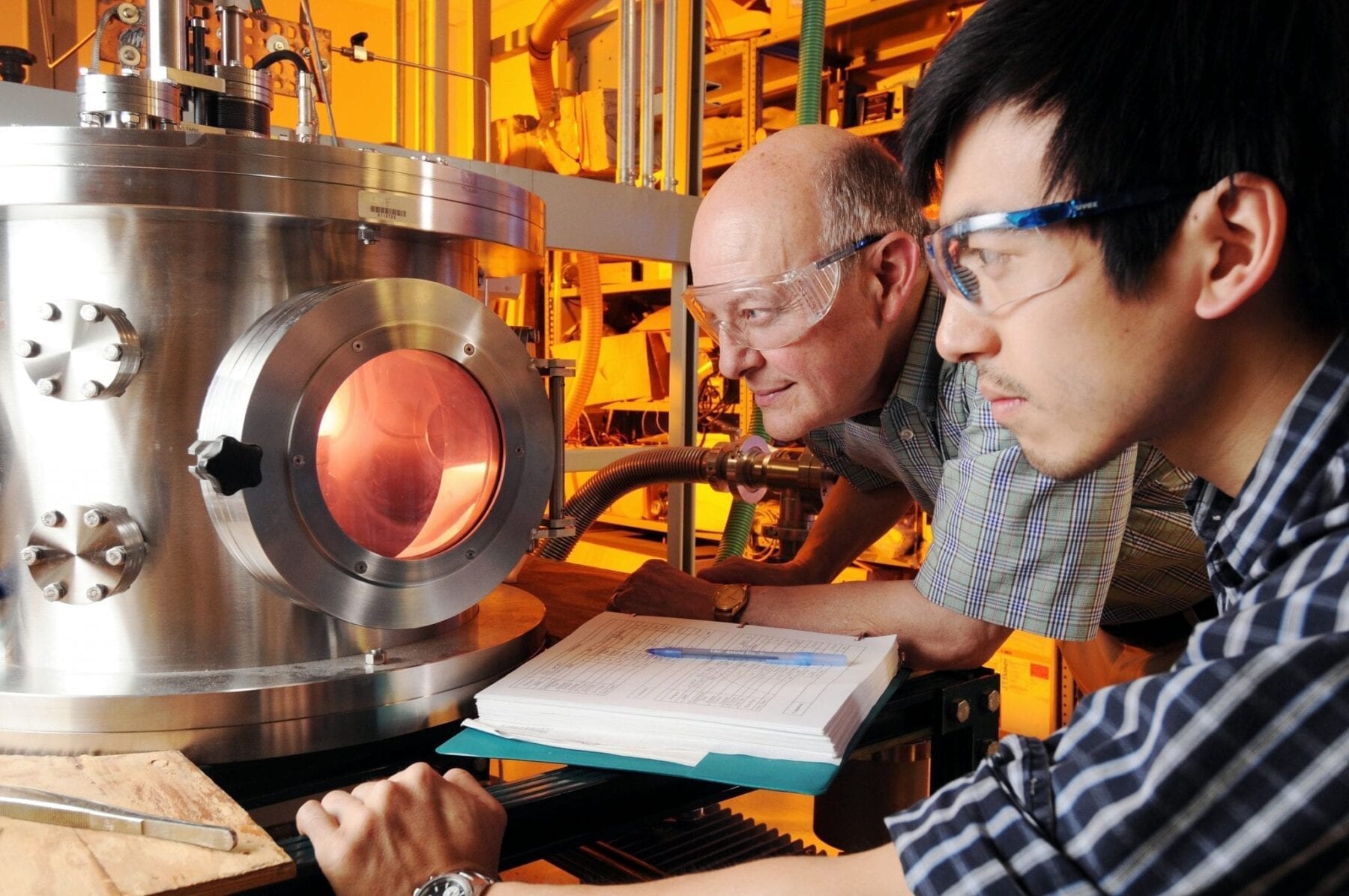
“This technology could have a payback period of less than one year.”
All chefs know that “you have to break some eggs to make an omelet,” and that includes engineers at Iowa State University who are using high-frequency sound waves to break down plant materials in order to cook up a better batch of biofuel. Research by David Grewell, associate professor of agricultural and biosystems engineering, and his colleagues Melissa Montalbo-Lomboy and Priyanka Chand, has shown that “pretreating” a wide variety of feedstocks (including switch grass, corn stover, and soft wood) with ultrasound consistently enhances the chemical reactions necessary to convert the biomass into high-value fuels and chemicals.
The team will present its findings at the 21st International Congress on Acoustics (ICA 2013), held June 2-7 in Montreal.
In one example of ultrasound’s positive impact on biofuel production, the Iowa State researchers found that they could significantly increase the efficiency of removing lignin from biomass in solution. Lignin is the chemical compound that binds cellulose and hemicellulose together in plant cell walls. Commonly, enzymes or chemicals are used to remove it from biomass and allow the freed sugars to be dissolved for further processing into biofuel. Grewell and his colleagues found that pretreating instead with ultrasound makes lignin removal so efficient that sugar dissolution occurs in minutes rather than the hours needed with traditional mixing systems.
Grewell’s team also found that hydrolysis of corn starch could be greatly accelerated using ultrasonics. In a conventional ethanol plant, ground corn is steamed with jet cookers at boiling point temperatures. This breaks down the corn, leaving a starch mash that is then cooled and treated with enzymes in a process known as hydrolysis to release glucose for fermentation. The Iowa State team replaced the initial steaming with ultrasound, sonically smashing the corn into tiny particles in the same way physicians use ultrasound to shatter kidney stones. The smaller corn fragments provided more surface area for enzymatic action, and therefore, resulted in fermentation yields comparable to jet cooking.
The potential cost savings for this method, says Grewell, are very encouraging. “Economic models,” he explains, “have shown that once implemented, this technology could have a payback period of less than one year.”
The Latest Bing News on:
Biofuel production
- For sustainable aviation fuel, researchers engineer a promising microorganism for precursor productionon May 9, 2024 at 8:09 am
Sustainable aviation fuels made from renewable sources of carbon could reduce carbon dioxide emissions and help to mitigate climate change. Isoprenol is a chemical involved in the production of a jet ...
- ISMA moots strategic policy interventions to meet 20% ethanol blending target by 2030on May 9, 2024 at 2:27 am
ISMA said challenges including the availability and affordability of raw materials for ethanol production need to be addressed | Photo Credit: LeshkaSmok To address the challenges faced by the sugar ...
- Dextrose… with a 40% lower carbon footprint? Green Plains gears up to launch ‘truly disruptive’ tech at ethanol plant in Iowaon May 8, 2024 at 5:56 pm
Green Plains will be able to produce dextrose with significantly lower capital and carbon intensity vs the standard wet milling process.
- Ethanol supply gets tighter, production downon May 8, 2024 at 3:56 pm
U.S. ethanol stocks have fallen for five weeks in a row. The U.S. Energy Information Administration says the domestic ethanol supply dropped to an 18-week low at 24.2 million barrels, a decrease of 1.
- State Rep. Craig Snow Says He’ll Reintroduce Biofuel Tax Credit Bill in 2025on May 8, 2024 at 1:26 am
A bill that would have given tax credits for retailers to sell more ethanol and biodiesel in Indiana was heard by the state legislature this year, but one state lawmaker will bring that same bill back ...
- Researchers reveal how molecular roadblocks slow the breakdown of cellulose for biofuelson May 7, 2024 at 2:24 pm
Cellulose, which helps give plant cell walls their rigid structure, holds promise as a renewable raw material for biofuels—if researchers can accelerate the production process. Compared to the ...
- How policy can drive market for biofuelson May 7, 2024 at 12:01 am
Federal policy on biofuels can make or break U.S. grain markets, so farmers need to keep a watchful eye on Washington, D.C.
- Ethanol plant partnership aims for low-carbon cornon May 6, 2024 at 4:15 am
Red Trail Energy, the first ethanol plant in the nation to use carbon capture and storage, is launching a program to provide a premium price for farmers to grow low-carbon ...
- Can corn ethanol really help decarbonize US air travel?on May 6, 2024 at 12:29 am
Last week, the U.S. Treasury Department released a set of highly anticipated and contentious tax-credit guidelines meant to spur production of sustainable aviation fuel, or SAF.
- March Corn-For-Ethanol Use Rises More Than Expectedon May 1, 2024 at 5:30 pm
Corn-for-ethanol use totaled 468.8 million bu. during March, up 23.3 million bu. (5.1%) from February and 32.7 million bu. (7.5%) more than last year. Traders expected corn ethanol use of 464.5 ...
The Latest Google Headlines on:
Biofuel production
[google_news title=”” keyword=”biofuel production” num_posts=”10″ blurb_length=”0″ show_thumb=”left”]
The Latest Bing News on:
Ultrasonic biofuel production
- For sustainable aviation fuel, researchers engineer a promising microorganism for precursor productionon May 9, 2024 at 8:09 am
Sustainable aviation fuels made from renewable sources of carbon could reduce carbon dioxide emissions and help to mitigate climate change. Isoprenol is a chemical involved in the production of a jet ...
- Why is breaking down plant material for biofuels so slow?on May 8, 2024 at 7:13 am
Tracking individual enzymes during the breakdown of cellulose for biofuel production has revealed how several roadblocks slow this process when using plant material that might otherwise go to waste.
- Ultrasonic coffee-maker produces the perfect cold brew in minuteson May 8, 2024 at 2:59 am
Cold-brewing coffee can reduce its bitter taste, but it normally takes up to 24 hours as the grounds slowly steep. A new method that involves pummelling the grounds with ultrasound can drastically spe ...
- ATA, 8 Others Ask EPA to Adjust Biofuel Output Volumeson May 3, 2024 at 1:42 pm
Renewable fuel production targets set by the U.S. Environmental Protection Agency are too low to sustain the sector and have resulted in shuttered biofuel companies, a consortium of trade ...
- Biofuel Industry Market Report 2024-2034: National Policies on Biofuel to Open New Avenues for the Marketon April 11, 2024 at 6:01 pm
Infrastructure limitations are one of the significant challenges for the biofuel industry. The production of biofuels requires specialized equipment and facilities, and these may not be widely ...
- Bolivia ready to launch biodiesel planton March 20, 2024 at 5:00 pm
According to Yacimientos Petrolíferos Fiscales Bolivianos (YPFB), the Biodiesel I Plant required an investment of US$ 47 million and will process 1,500 barrels of biodiesel daily with raw ...
- An economic and technical evaluation of microalgal biofuelson December 19, 2022 at 7:05 am
Considerable synergies also exist between microalgae biofuel production and a wide range of other industries, including human and animal food production, veterinary applications, agrochemicals ...
- Promising Biofuel Resources: Lignocellulose and Algaeon December 9, 2021 at 1:37 am
Which plants are good resources for biofuel production? The first attempts to produce a biologically-based fuel to replace mineral petrol and diesel, continued to look for derivatives of well ...
- Are Biofuels Worth the Investment?on November 7, 2017 at 4:35 am
Biofuels are at a crossroads. According to the International Energy Agency, global biofuels production has grown more than sixfold over the last decade, yet biofuels still account for just 3 ...
- Policy Statements » Statements: Biofuel Sustainabilityon January 2, 2017 at 5:56 am
The sustainability of alternative biofuel production systems must be assessed now, in order to maximize the potential for developing truly sustainable scenarios – that is, profitable systems that can ...
The Latest Google Headlines on:
Ultrasonic biofuel production
[google_news title=”” keyword=”ultrasonic biofuel production” num_posts=”10″ blurb_length=”0″ show_thumb=”left”]










